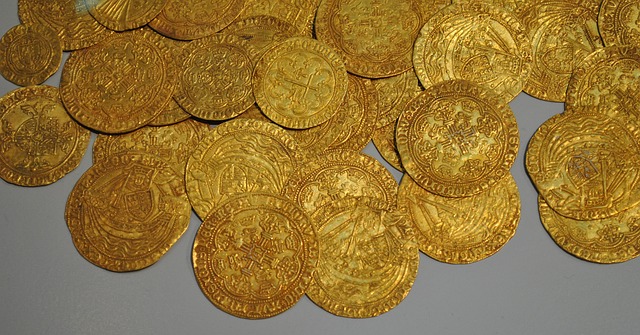Discover Antique British Coins Worth Money
The world of numismatics offers a fascinating journey through history, and antique British coins are among the most sought-after treasures for collectors and investors alike. These small metal discs not only represent monetary value but also serve as tangible links to the past, offering insights into the economic, political, and social landscapes of bygone eras. For those interested in exploring this captivating field, understanding which antique British coins are valuable can be both rewarding and potentially lucrative.

What makes antique British coins valuable?
The value of antique British coins is determined by several factors. Rarity is perhaps the most significant, with coins produced in limited quantities or those that have survived in small numbers commanding higher prices. Age also plays a crucial role, as older coins tend to be more desirable. The condition of the coin is paramount; well-preserved specimens with minimal wear and tear are highly prized. Historical significance, such as coins minted during important events or reigns, can greatly enhance value. Lastly, the coin’s composition, particularly those made of precious metals like gold or silver, contributes to its worth.
Which eras produce the most valuable antique British coins?
While valuable coins can be found from various periods, certain eras are particularly notable. The Anglo-Saxon period (5th to 11th centuries) yields some of the rarest and most valuable coins, with examples like the Gold Penny of Offa fetching astronomical sums. Medieval coins, especially those from the Plantagenet dynasty, are highly sought after. Tudor and Stuart era coins, including those from Elizabeth I’s reign, can command significant prices. Georgian and early Victorian coins, particularly gold sovereigns and proof sets, are also popular among collectors and investors.
What are some of the most valuable antique British coins?
Several antique British coins have achieved legendary status among collectors. The 1933 George V Penny is one of the most famous, with only a handful known to exist. The 1936 Edward VIII Gold Sovereign, of which only a few pattern coins were struck before Edward’s abdication, is another incredibly rare find. The 1738 King George II Gold 5 Guineas piece is highly prized for its rarity and impressive size. For silver coin enthusiasts, the 1703 Queen Anne Vigo Bay 5 Guineas is a coveted item, commemorating the capture of Spanish treasure ships.
How can collectors identify antique British coins worth money?
Identifying valuable antique British coins requires knowledge and careful examination. Start by familiarizing yourself with British coin history and catalogues. Look for key details such as the monarch’s effigy, date, mint marks, and any unique features or errors. The edge of the coin can also provide valuable information. Use a magnifying glass to inspect the coin’s condition, looking for signs of wear, damage, or cleaning. Authenticity is crucial, so learn to distinguish genuine coins from counterfeits. When in doubt, consult with reputable coin dealers or professional grading services for expert opinions.
What tips can help collectors of antique British coins in the UK?
For collectors in the UK, the journey into antique British coins offers unique advantages. Attend local coin fairs and auctions to gain hands-on experience and potentially find hidden gems. Join numismatic societies like the British Numismatic Society to network with fellow enthusiasts and access valuable resources. Explore regional museums with coin collections to deepen your knowledge. Be aware of UK laws regarding metal detecting and treasure finds, as these can be sources of rare coins. Consider specializing in a specific era or type of coin to develop expertise. Always purchase from reputable dealers and be cautious of deals that seem too good to be true.
Which antique British coins are best for investment purposes?
When considering antique British coins for investment, several options stand out. Gold sovereigns, particularly those from the Victorian era, are popular due to their historical significance and gold content. Proof sets from various reigns can offer excellent long-term value appreciation. Rare silver coins, such as early milled coinage from the 17th century, can be wise investments. For those with substantial budgets, exceptionally rare coins like the 1703 Vigo Bay 5 Guineas or 1937 Edward VIII Pattern coins have shown remarkable growth in value over time.
| Coin | Era | Estimated Value Range (GBP) |
|---|---|---|
| 1933 George V Penny | Modern | 50,000 - 200,000+ |
| 1738 George II 5 Guineas | Georgian | 50,000 - 150,000 |
| 1703 Queen Anne Vigo Bay 5 Guineas | Stuart | 200,000 - 500,000 |
| Edward VIII Gold Sovereign Pattern | Modern | 500,000 - 1,000,000+ |
| Gold Penny of Offa | Anglo-Saxon | 750,000 - 1,500,000+ |
Prices, rates, or cost estimates mentioned in this article are based on the latest available information but may change over time. Independent research is advised before making financial decisions.
The world of antique British coins offers a rich tapestry of history, artistry, and potential financial reward. Whether you’re a seasoned collector or a curious newcomer, the pursuit of these numismatic treasures can be an endlessly fascinating journey. By educating yourself, carefully selecting pieces, and approaching the hobby with patience and diligence, you can build a collection that not only brings personal satisfaction but may also prove to be a sound investment for the future. Remember, the true value of these coins lies not just in their monetary worth, but in the stories they tell and the connections they provide to Britain’s illustrious past.




